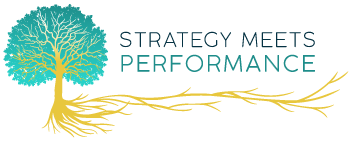By Dr. Sherry Nooravi [Part 3 of 6]
When it comes to taking risks, San Diego’s Most Admired CEOs have often had to go against naysayers to follow their gut feelings and take actions that resulted in career and company growth. Three themes emerged in the interviews I had with the winners of San Diego’s Most Admired CEOs (selected by the San Diego Business Journal) on the topic of risk and innovation. Times change and a few of the CEOs have moved on. The concepts the 9 CEOs shared apply in most industries.
Follow Your Gut
When Tim Caulfield became CEO of American Internet Services in 2010, (he has since moved on) he insisted on adding products that were beyond the skillset of what they were doing at the time. There were concerns about it not being the right fit—even investors had doubt—but he was adamant about moving forward with his plans. “It was about understanding where the market was headed and what represented the old and stagnant versus what represents the new,” he said. “If we’re not there, we’ll get left behind. I had to look forward and stick with my thoughts on making the changes.”
Gary Rayner, former CEO of LIfeProof, seems to be the poster child for following your gut: “When I was starting LifeProof, everyone I talked to didn’t see it,” he said. “I can’t think of one person who told me I should do it. They all asked, ‘another cell phone case?’”
Similarly, Greg Rogers of Pacific Building Group said he follows his gut but also relies on what he understands. “I do what I understand,” he said. “I don’t take big risks on things that I don’t understand; I take educated risks.”
A perfect complement to gut feel is getting input from trusted advisors who have the ability to provide educated counsel.
Get a Sounding Board
Gary Cady of Torrey Pines Bank believes the quality of the decisions you make is based on the quality of people around you. “The numbers may be great, but if you have a management team you don’t trust, you have a problem,” he said.
Cady isn’t the only one who relies on a strong team to help support risk. Joanne Pastula of Junior Achievement finds that calculated risk is essential. “Our world turns on entrepreneurship and intrapreunership; it’s no longer a world of ‘this is my job.’ They have to know their job and go out of the box,” she said. “I have good instincts. I use Vistage. I have a great 50-person board and a valuable executive team.”
Stop Running and Realize Risk is a Part of Life
Greg Koch said the way Stone Brewing Company designed their restaurants demonstrates thinking differently and taking risks, two behaviors they seek in their teams. “We have a ban on high fructose syrup and everything is organic so our prices are a little higher in the area,” he explained. “There are no TVs, an eclectic menu and no major brand beers. By conventional thinking, that’s risky. How could I possibly expect to have any success doing the same thing? It was simple; we had to be a destination restaurant so we should act like one. It has been said by a lot of thinkers and doers: Look for ways that people say it’s not supposed to be done and do that. For me, it’s finding a way that it’s not supposed to be done.”
I wrote an article, Running Toward the Lion’s Roar, that focuses on how putting our fears aside and running toward the “roar” (like these CEOs do) will result in greater success. We can learn from studying teamwork in the animal kingdom and how prey reacts to a threat. When lions see a herd of prey, like gazelles or antelopes, they strategize on how they can maximize capturing the most animals for their pride. The older lions, many without teeth and incapable of running very far (but still with strong roars), get on one side of the field. The young, virile lions that can run far get on the other side. Then, the roaring begins. Over and over again, the old and weak lions roar. The scared antelope and gazelles run exactly in the opposite direction of the roars…into the open jaws of the younger lions. Now imagine if these gazelles knew to run toward the roar. They would have a much better chance of saving most of their herd from the feeble, old lions.
This example demonstrates what most people do when they’re afraid of risk in life. They run in the opposite direction, assuming what they’re running from is a worst-case scenario, when in reality it’s a figment of their imagination that’s keeping them from growth and being their most expressed selves. Here are some things we can learn from these brave CEOs:
- Bob Kelly: “I never see too many things as risk. I see it as an adventure. Part of my growing up was risk, gangs in the courtyards and risk was all around you. It wasn’t going to stop me from going where I needed to go. Same here, lots of things that have risk; you just have to figure out how to manage it. We shouldn’t be scared of risk. It’s not scary. I talk to lots of people about big decisions.”
- Greg Koch: “I am part of the leadership team here; we tend to discuss and make decisions together. I’m the guy seeing the big vision stuff and come up with ideas that make people go ‘huh?’ and scare them from time to time. Steve and I have classic ying-yang business partnership. If you drew us as a cartoon panel, I’d be dog at end of leash saying ‘squirrel,’ he’d be the owner trying to keep the dog in check and from running after everything that moves. He needs things proved backward and forward why we should do something and for me, it should be proven why we shouldn’t do something.”
Summary: How Will You Take the Leap?
When it comes to taking risk and trying new approaches to grow companies, I often see two types of tendencies in leaders. The first type has comfort with innovation and risk and has more ideas than they know what to do with. The other doesn’t particularly like change and has to have things such as new processes, expensive equipment, or a new way of business proven to them backward and forward. The funny thing is that companies need both types of people to innovate.
I share the following exercise with coaching clients who are at either end of the risk-taking continuum.
If you’d like your company to take more risks for innovation, efficiency and needed change, create a proposal and share it with a trusted colleague who’s on the more risk-averse side of things. Ask this person to poke holes in your plan, critique it and ask questions about the why, how, where, why now, etc. Listen, take notes, don’t defend anything and end by thanking the person. Use these notes to reformulate a more specific plan and present it to your senior team.
If, on the other hand, you believe your company has chronic change syndrome—introducing too many new things or spending too much on innovation without results—work on a proposal that will help your colleagues see the importance of slowing down and seeking more input before making changes.




